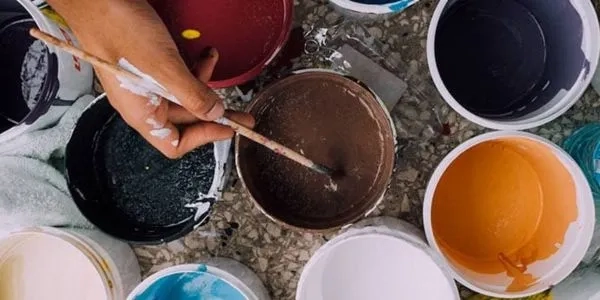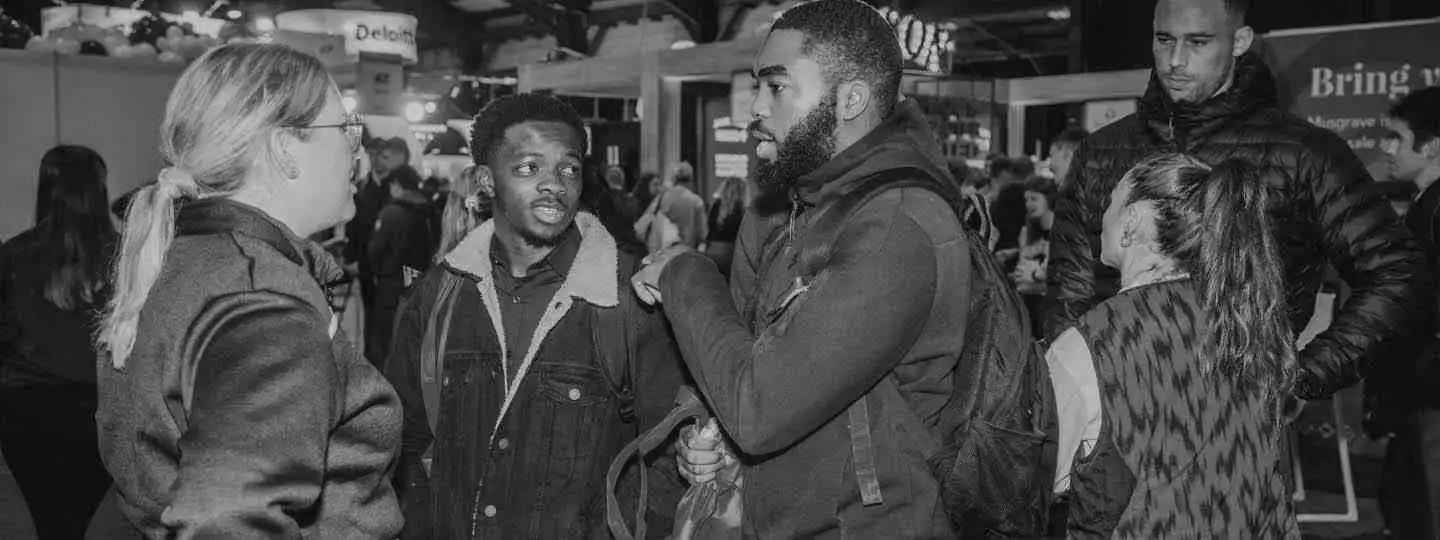Careers advice and planning
Careers in art and design
25 Jan 2023, 13:36
There are many different options to consider when thinking about a career in art and design, whether you aim to become the winner of the next Turner prize, seek to explain art to others or use it to design products.

Careers in art and design can be competitive and require much natural talent to enter. That said, there are many job opportunities available in this area. According to the 2018/19 What do graduates do? survey, 29.9% of fine arts graduates and 46.6% of design graduates do go on to a career in the art and design industry.
While working in art and design can be a varied and creative career path, there are some tough realities that you ought to consider. You will likely begin your career by working unpredictable hours on a freelance basis. Salaries are not high for those starting out, so many take on a job in a related area – often teaching in their discipline.
What specific roles are available in art and design?
Fine artist
Fine artists create and sell their original artwork, often specialising in mediums such as painting, drawing or sculpture. There are no formal qualification requirements for a career in this area, but if you are interested in studying fine art and your first degree is not in a related subject, you might want to explore your options for studying fine art as a second undergraduate degree. You usually need a degree in fine art or a related subject for postgraduate courses in fine art.
Illustrator
Illustrators work to a brief to create designs for products such as books, cards and clothes. Relevant qualifications include fine art or illustration, though ability and experience are equally important. You can start out by taking on small or unpaid commissions and freelancers can register with the Association of Illustrators to access resources and opportunities for self-promotion.
Graphic designer
Graphic designers create clear and eye-catching graphics for media products such as websites, magazines and advertisements. Most graphic designers can enter the industry through a combination of relevant qualifications and a strong portfolio.
Photographer
Photographers take and edit photos according to a brief and usually specialise in an area such as commercial photography (including areas such as weddings or photojournalism) or fine art photography. To become a photographer, you should seek to gain as much experience as possible and joining the Association of Photographers will give you an opportunity to network and showcase your portfolio.
Interior designer
Interior designers design and renovate interiors according to the wishes of clients, considering cost, the type of building and the space they are working with – giving them an opportunity to use both creative and practical skills. Though a relevant degree is useful, significant experience can be sufficient to enter the profession.
Furniture designer
Furniture designers research, produce and improve designs for furniture, keeping themselves informed about current trends. A strong portfolio of work, relevant work experience and a willingness to make speculative applications are good places to start.
Art teacher or lecturer
To teach art in schools, you can either take a degree in education or a relevant first degree and a postgraduate qualification in teaching (PGCE). Art lecturers must undertake extensive research and complete a postgraduate qualification – often a PhD. See our teaching and education advice for more information.
Curator
Curators look after and organise artworks that a museum or gallery owns or has on loan, often specialising in a specific style or period. You usually need a postgraduate qualification in your specialism and at least two years’ experience working in a gallery or museum, for which some opportunities are advertised through the Museums Association.
Art therapist
Art therapists use art to guide and help people suffering from mental or physical health problems. You need a first degree in a subject related to art and design or social work and a postgraduate qualification in art therapy so that you can be recognised by the Heath and Care Professions Council (HCPC). You can join the British Association of Art Therapists to find relevant courses and more information and NHS Jobs often displays vacancies in the area.
Animator
Animators create images called frames, which create animation in a sequence. Animation is open to all graduates, but a relevant degree and postgraduate qualification in animation can be useful. Most people begin as studio runners and progress to junior animation roles. The training charity for the screen industries Screen Skills provides more information.
Product designer
Product designers design and improve everyday items according to a brief, and often create and test prototypes. A good level of computer literacy is essential for this.
How can I get a job in art and design?
Maya Little, a senior designer at Group GTI, says: ‘The one piece of advice I would offer anyone looking to go into art and design is to get an internship or work experience. I was an intern myself and it gives you the chance to make something real and something people actually use. You gain experience of the design environment and it makes a massive difference to someone’s CV.’
Many jobs in art and design involve working freelance, so it is important to network and advertise your work. Entry level jobs are often at the level of being an assistant and some jobs are not advertised, so you may have to send in speculative applications.
For some roles, such as photography, you're likely to need to be able to use applications such as Photoshop. If you want to work in graphic or web design, you will need a good level of computer literacy and a knowledge of graphic design software such as QuarkXPress, Illustrator or InDesign.
What can I do at uni to increase my chances of employment?
- Start to build a portfolio with examples of your work.
- For some of the roles listed above, you can volunteer at an art gallery to show commitment, network and learn more about an area.
- Join an art society – they often provide workshops and an opportunity to build your portfolio.
- Start to advertise your work online by creating a website or blog and by using social media.
- Get as much work experience in your area as you can.
Potential employers and useful links
- Arts Council England displays news and job vacancies and runs a useful jobs site called Arts Jobs.
- Museums and galleries such as the British Museum, the National Gallery and the Ashmolean Museum offer vacancies and volunteering opportunities on their websites.
- The National Trust and Voluntary Arts display volunteering opportunities.
- The Chartered Society of Designers offers training seminars, workshops and opportunities to get professional qualifications for careers in design.
Next: search internships and graduate jobs
- View our media graduate jobs
- View our marketing graduate jobs
- View our creative arts and design graduate jobs
targetjobs Editorial advice
This describes editorially independent and impartial content, which has been written and edited by the targetjobs content team. Any external contributors featuring in the article are in line with our non-advertorial policy, by which we mean that we do not promote one organisation over another.




